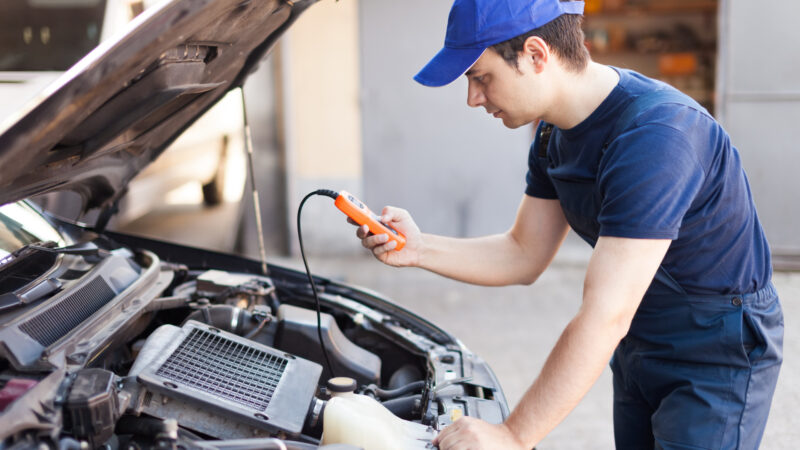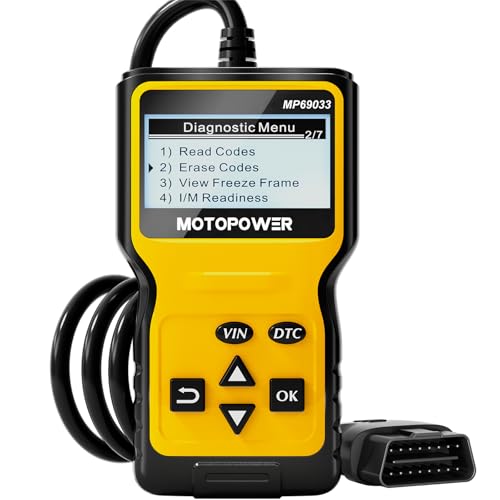Table of Contents Show
Acronyms can be helpful in various industries for concise and clear communication. However, they’re only effective if everyone knows their meaning. For example, OBD is one commonly used term in the car market, but many don’t know its meaning.
You may have heard it while getting your oil changed or at the mechanic. However, you were likely worrying about how much it would cost and not its definition. If that’s you, we understand and have you covered.
Today, we’ll help clear up any confusion and discuss this term, what it means, and why you should know it.
Let’s get started!
What Is the Meaning of OBD?
The term OBD stands for “On-Board Diagnostics.” This system is built into a vehicle and can assess a vehicle’s mechanical condition. It monitors not only the performance and health of the car but also its components and various systems. If you’re having an issue with your engine, emissions, or other critical components, these devices can get to the root of it.
These complex and sophisticated systems hit the scene in the early 1980s. They became standard on vehicles during the mid-1990s. However, the initial capabilities were very basic and severely limited.
When these devices detect an issue, they generate Diagnostic Trouble Codes (DTCs). These provide a detailed explanation as to the cause of the specific problem. However, reading and understanding the meaning of the codes requires another piece of equipment, an OBD scanner (or code reader).
What Is the Difference Between OBD and OBD-II?
Like Apple releases upgrades to their phones with each new model, the same is true for OBD and OBD-II. The upgrade to OBD-II provided increased capabilities and standardization.
When OBD was first released, each automaker had a proprietary system. As you can imagine, this made it difficult for mechanics and service centers to diagnose issues.
Luckily, OBD-II established a standard set of diagnostic codes across all manufacturers and introduced a uniform connection. The 16-pin DLC (Data Link Connector) allows mechanics to address issues, improve vehicle performance, and maintain proper emissions.
How to Use an OBD-II Scanner
Using an OBD-II is very simple. An OBD scanner can help you identify issues, understand the meaning of dashboard lights, and help you keep your vehicle in tip-top shape. Unfortunately, knowing what’s wrong with the automobile is the easy part. Addressing the codes and issues may require a professional.
Obtain an OBD-II Scanner
The first thing you need to do is to acquire an OBD-II scanner. Luckily, these are relatively inexpensive and readily available on Amazon. For less than $25, you can scan, read, and understand the meaning of fault codes with this diagnostic OBD tool. If you have a car made after 1996, it’ll get the job done.
- Multi-Functions - Practical Multi-Functions OBD2 code reader features built-in OBD2 DTC lookup library, which help you...
- Wide Capability - Supports 9 protocols compatible with most 1996 US-Based, 2000 EU-Based and Asian cars, and newer OBD...
However, it’s worth noting that most car parts stores and mechanics have these devices. They’ll often read codes for customers for free. So you can save a tremendous amount of hassle if you can get to one of these locations.
Locate the OBD-II Port
Once you have the OBD-II scanner, you must find where to plug it in. Typically, this is under the dashboard near the steering column. However, manufacturers place it differently for each vehicle.
If you need help, check your owner’s manual or contact the manufacturer. As with many things, you can do a quick Google search with your year, make, and model. There’s a good chance you’re not the first to inquire about its location.
Keep in Mind: Do you have a foggy RV window? Here’s how to repair it!
Connect the OBD-II Scanner
You can connect the scanner now that you’ve located the OBD-II port. The car should be off when connecting the scanner to the 16-pin connection. Take your time when connecting the device. You do not want to cause damage to any of the pins or the port.
Turn on Vehicle
After connecting the scanner, you can turn on the vehicle. However, you’ll want to check the instructions for your scanner. Some units only require you to put it in the on position, and others need you to run the engine.
If you’re not careful, you could cause severe or permanent damage to the scanner or get an inaccurate reading. You want an accurate reading so you understand the meaning of the OBD scanner codes.
Enter Requested Information
The scanner will ask for information about your vehicle, primarily the VIN (vehicle identification number). Some devices will also ask for your engine and model type. If you need to know the VIN, it’s easy to find.
The VIN typically gets stamped on the dashboard near the windshield on the driver’s side. It’s also on a sticker on the driver’s side door jamb, your insurance documents, and the title or registration for your vehicle. If your car connects to a smartphone app, you can find it there too.
Keep in Mind: What does GVWR mean and how is it calculated? Let’s find out!
Read Diagnostic Trouble Codes (DTCs)
Now that you’ve connected the device and input the information, it’s time to start reading codes. The scanner will communicate with your vehicle’s onboard computer to retrieve any Diagnostic Trouble Codes. This will be important information for you to fix your car.
The scanner may detect one or more DTCs. To get to the bottom of the issue, you’ll need to interpret the meaning of the codes on the OBD. Almost all scanners will display the code, but some will explain each code briefly. Either way, it’s essential to understand what they mean for you and your vehicle.

Clear Diagnostic Trouble Codes
You can clear the OBD codes once you’ve diagnosed their meaning and resolved any issues. Most scanners will do this at the press of a button. Doing so will turn off dashboard warning lights that may have come on during the situation.
However, you should only do this if you’ve addressed the situation. Getting the check engine light to turn off won’t fix the problem. It will likely return before you know it.
Is an OBD Scanner Worth It?
An OBD scanner can be worth it if you understand its meaning and know what you’re doing. If not, you could do more harm than good to your vehicle. Most drivers don’t need these devices as they have a mechanic they trust to do the work. However, it can be worth getting one if you have the tools, knowledge, and experience to work on your vehicle.
Do you use an OBD scanner to diagnose problems? Do you think it’s worth it?
Last update on 2024-07-25 / Affiliate links / Images from Amazon Product Advertising API







